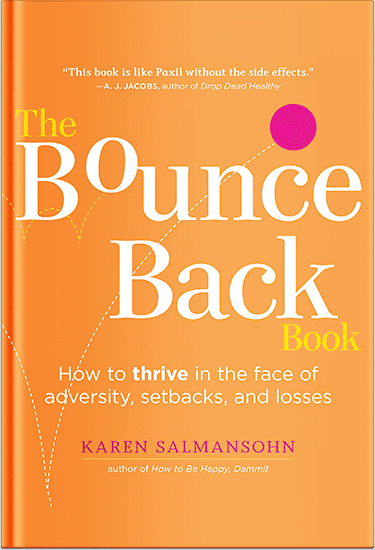 Road trips don’t have to be a headache, although the only way to guarantee a journey that’s free from snafus is to plan it thoroughly in advance.
Road trips don’t have to be a headache, although the only way to guarantee a journey that’s free from snafus is to plan it thoroughly in advance.
If you’re in the dark about what to do in this situation, stick around. We’ll talk through the main points you need to consider.
I’m sharing about this topic of stress-free road trips, because I’m a bestselling author and happiness researcher. I’m known for my bestseller called Happy Habits.
In my research, I learned a lot about how to make sure you develop positive habits which lead to your best life. Guess what? Taking road trips with loved ones is a research backed “happy habit.” It bonds you – and creates memories for years to come.
I want to help make sure these are happy memories – not stressful memories! So in this article I explore a step-by-step guide to planning a stress-free road trip.
Route Selection for a Stress-Free Road Trip
While you might not need to map out your route using a physical atlas any more, it’s still sensible to think carefully about which roads to take and what stops to pencil in along the way. Given that there are over 4 million miles of highways knitting the nation together, you’ll need some digital assistance in this scenario.
First, pick your platform of choice. While Google Maps is a good default option, serious road trippers tend to rate Waze more highly because it’s all about user input and condition analysis.
Next, consider where you’re headed. Look for potential stopping points along the way. Penciling in a break every hour or so isn’t just useful for rest and relaxation. It also lets you take in attractions you might otherwise have missed.
Finally, determine your journey time and adjust expectations based on how far you’re going, how many of you will be traveling, and the mode of transport you’ve selected.
For instance, if you’re based on the east coast and you’re looking into Pennsylvania RVs for sale as a means of making a mega cross-country trip to the west, your cruising speed will be lower than if you were driving a smaller sedan or SUV. But you’ll get there more comfortably and serenely. So it’s a worthy trade-off.
Packing Essentials for a Stress-Free Road Trip
Packing smartly is another must if you want to eliminate stress from a road trip.
Here’s what you need to consider:
- Personal Identification: Carry your driver’s license, ID, and travel insurance details.
- Vehicle Documents: Include registration papers and car insurance information. If your insurance payments are high, consider the factors causing this and see if you can bring this cost down before you head out.
- First Aid Kit: Stock it with bandages, antiseptic wipes, pain relievers, and any prescription meds.
- Snacks and Drinks: Pack non-perishable snacks like granola bars or nuts; bring water bottles to stay hydrated.
- Clothing Layers: Prepare for varying temperatures by packing light jackets or sweaters. Include comfortable shoes suitable for walking or hiking stops.
- Navigation Tools: Keep physical maps as backups to digital navigation tools. Also, have a reliable smartphone charger accessible at all times.
- Emergency Kit for Car Problems: Ensure jumper cables, a flashlight (with extra batteries), tire repair kit, and basic tools are available.
- Entertainment Options: Bring books, and download audiobooks or podcasts in advance (for downtime during long stretches).
- Hygiene Products: Stock up on hand sanitizer, wet wipes, tissues; include toiletries like toothbrushes/paste in small bags.
Vehicle Maintenance Checks
Ensuring your vehicle is road-ready prevents unexpected issues – and given that data from Agero shows there are 69 million breakdowns each year, with an economic impact in excess of $41 billion, you need to consider that the chances of something being amiss are pretty high.
Start by inspecting the tires; check for proper inflation, adequate tread depth, and any visible damage. Next, examine the oil level and quality – an oil change might be necessary if it’s been a while since the last one. Check coolant levels to avoid overheating on long drives.
Also, don’t forget to inspect other essential fluids like brake fluid, power steering fluid, and windshield washer fluid. Assessing these can help maintain optimal performance throughout your trip.
Examine the battery condition as well; clean any corrosion from terminals and ensure it’s fully charged. Test all lights including headlights, brake lights, turn signals, and interior lights to guarantee visibility at night or in bad weather.
Lastly, review your wiper blades’ effectiveness by checking for wear or streaks they leave behind on the windshield – consider replacing them if needed. These steps make sure you catch potential problems before hitting the road.
Wrapping Up: Planning a Stress-Free Road Trip
Once you’ve got a handle on these road trip fundamentals, you’ll truly be able to get behind the wheel with the whole family onboard and make amazing memories together on the open asphalt, rather than tearing your hair out as soon as you reach the end of your street.
Become the happiest person you know
Get more tips to live a life you truly love! Check out my bestselling book Think Happy!
P.S. Before you zip off to your next Internet pit stop, check out these 2 game changers below - that could dramatically upscale your life.
1. Check Out My Book On Enjoying A Well-Lived Life: It’s called "Your To Die For Life: How to Maximize Joy and Minimize Regret Before Your Time Runs Out." Think of it as your life’s manual to cranking up the volume on joy, meaning, and connection. Learn more here.
2. Life Review Therapy - What if you could get a clear picture of where you are versus where you want to be, and find out exactly why you’re not there yet? That’s what Life Review Therapy is all about.. If you’re serious about transforming your life, let’s talk. Learn more HERE.
Think happier. Think calmer.
Think about subscribing for free weekly tools here.
No SPAM, ever! Read the Privacy Policy for more information.
One last step!
Please go to your inbox and click the confirmation link we just emailed you so you can start to get your free weekly NotSalmon Happiness Tools! Plus, you’ll immediately receive a chunklette of Karen’s bestselling Bounce Back Book!


 Road trips don’t have to be a headache, although the only way to guarantee a journey that’s free from snafus is to plan it thoroughly in advance.
Road trips don’t have to be a headache, although the only way to guarantee a journey that’s free from snafus is to plan it thoroughly in advance.